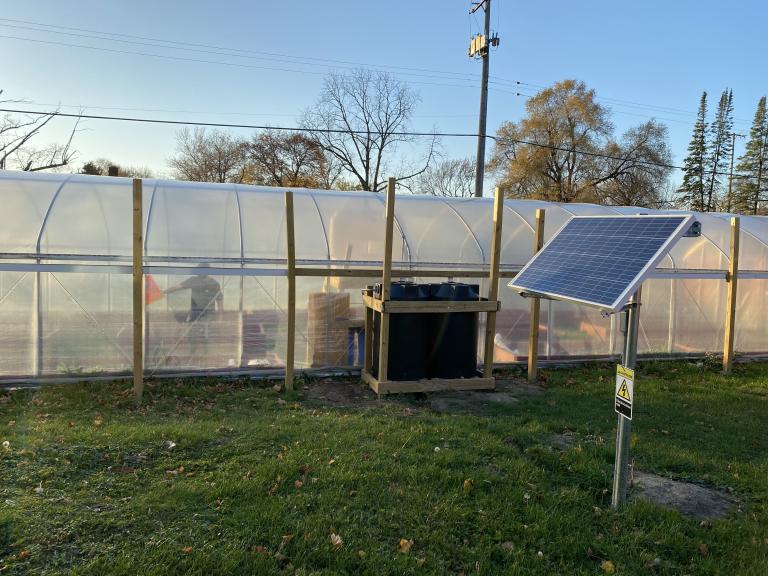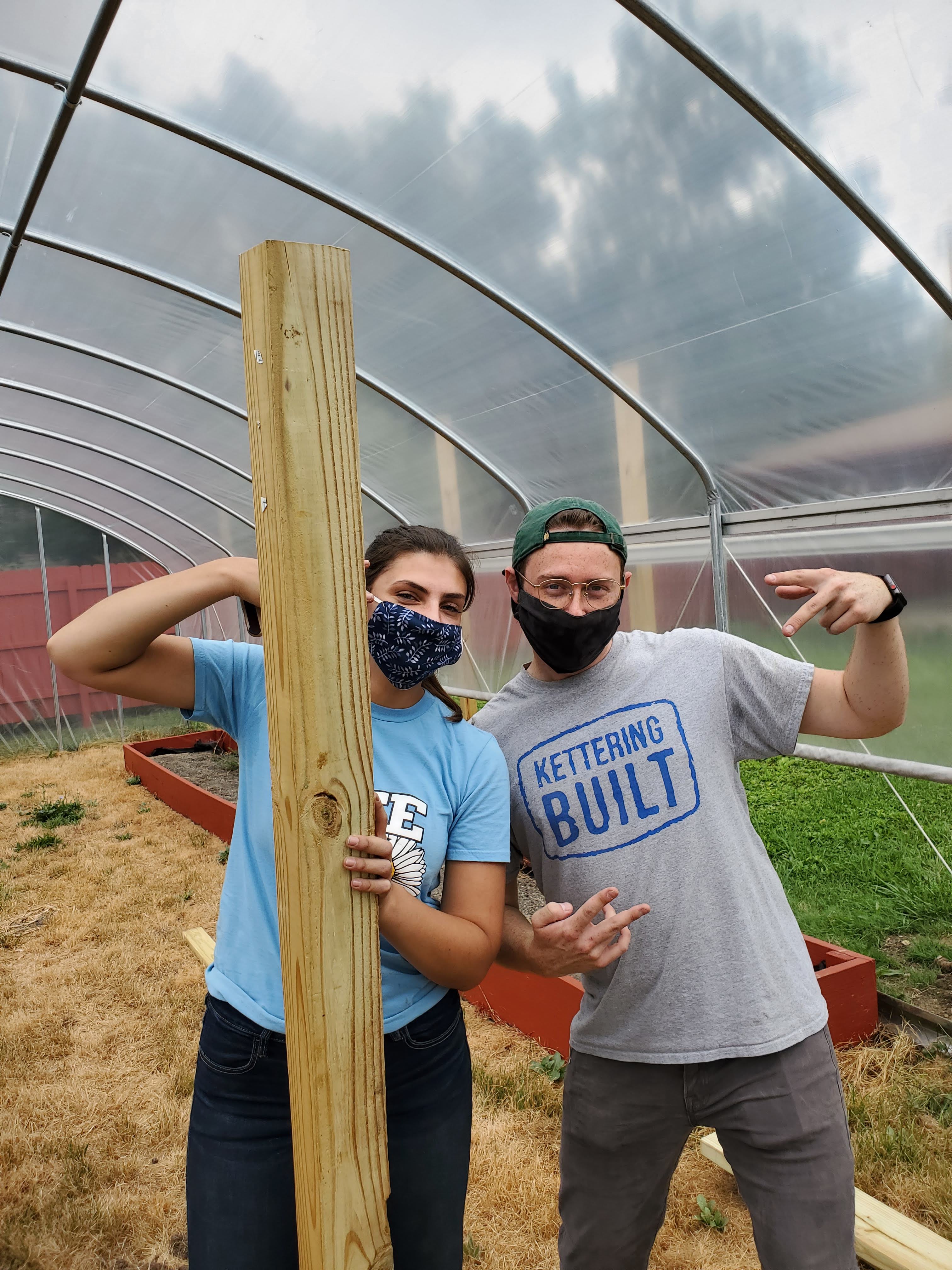
“Any solution we come up with, we have to think about how the community can not just take care of it, but actually reproduce it.”
Residents of Northern Flint will have better access to fresh produce thanks to the efforts of the Kettering University Student Association for Global Engineering (SAGE) Club and a Flint non-profit organization, the Money, Attitude, Direction and Education (MADE) Institute.
The groups partnered over the last year to design and build a self-sustaining hoop house to grow fresh produce.
“This is important for many levels, especially in the inner city in our community, we have a food desert because a lot of the major grocery chains moved out six, seven, eight years ago and during the Flint water crisis, it was discovered that good, healthy food can mitigate exposure to lead and other diseases,” said Leon El-Alamin, Founder and Executive Director of MADE.
Founded in 2015, the MADE Institute provides resources for at-risk youth and formerly incarcerated residents to improve pre-and post-release case planning and management with additional services that support sustainable housing and employment with the overall goal of improving public safety.
The hoop house is located in the Saginaw and Pierson Road area next to MADE’s men’s transitional housing. Residents of the housing will learn about growing fresh produce, as well as entrepreneurial skills if they sell it at the local farmer’s market. MADE also is working with Michigan State University for expertise to assist in the planting and growing process.
Four MADE participants built the hoop house in about a week, based on the blueprints created by Kettering students. The SAGE Club partnered with members of the Electrical Engineering Honors Society, Eta Kappa Nu, to design the hoop house to trap, filter and store rainwater using solar energy.
Rainwater is guided into a gutter system by a tarp that is connected to the roof of the house. The gutters are attached to the post about 15 inches away from the house to prevent snow from weighing them down and tearing the roof of the house. Water from the gutters is stored in two 125-gallon tanks. A filtration system cleans the water when it moves from the outside tank to the inside tank. After studying Flint weather patterns, the students estimated they could store up to five days’ worth of water with no sunlight.
Plans to build the house began in October 2019. Design, prep and material collection took place throughout the winter with the expectation that construction would start in the spring, but COVID-19 restrictions moved construction to the summer. The house was finished in October 2020. Some tweaks to the gutter system will be needed before planting begins this spring.
“Our focus was building the concept, making sure it works and documenting it so it can be replicated,” said Sean Wendling (’21, ME), SAGE Club member.
The water system is especially critical because the water in the area still is not safe to use, El-Alamin said because many homes are blighted and the pipes haven’t been replaced in the homes and in some cases, at the street level.
If contaminated water were used to water the garden, some metals can be absorbed into leafy plants such as lettuce, kale or spinach, said Dr. Laura Sullivan, Mechanical Engineer Professor and SAGE Club faculty advisor. Another issue is there are some parts of Flint where there’s a lot of sitting water, which stagnates. If there was chlorine in the water, it would decay. In addition, if there were bacteria in the water, that could cause issues if people don’t properly wash the produce, Sullivan said.
She said creating this type of hoop house was also important for the SAGE Club so that they could provide it as a solution for other parts of the world that don’t have access to city water and/or the groundwater is contaminated.
“Once we get this up and running, we can show other organizations the blueprint for doing this,” Sullivan said.
In addition to the blueprint, she said they’ll also give El-Alamin a maintenance manual. This model is important because then the recipients of the hoop house can repair it if something breaks and won’t have to rely on anyone else.
“Any solution we come up with, we have to think about how the community can not just take care of it, but actually reproduce it,” Sullivan said. “That’s the ideal; we’re not the savior, we just plant a seed and then find some place to plant the next seed.”
Both A-section and B-section students worked on this project.
SAGE Club member Olivia Bussone (’21, ME) hadn’t heard of MADE before this project but was impressed with the organization.
“It was a really great experience. I really liked working with [El-Alamin],” she said. “He’s a really great guy, and the work that MADE does is so awesome.”
Bussone said it’s important for college students to give back to the community and organizations like MADE.
“I know sometimes Kettering can be a bit of a bubble, but I think it’s really important for students to learn about the community they are living in for the four years they are here, and I don’t think they can do that until they are getting out and listening to the experiences of others,” she said.
Wendling echoed Bussone’s sentiments.
“I feel really good about [the project]. I’m really happy that we, as students, were able to come together and make something like happen for the community around us,” he said. “… I feel like I learned a lot in Flint, and I got a lot out of it; just having an opportunity to do something that impacts that area is meaningful to me, along with the connections I’ve made and people I’ve met.”
